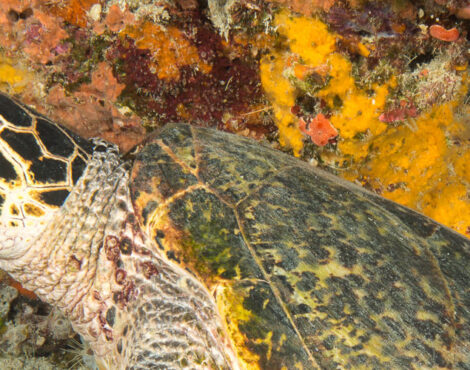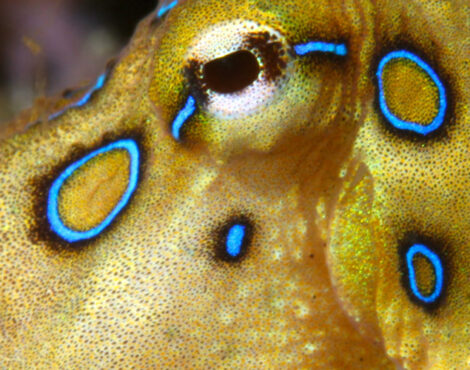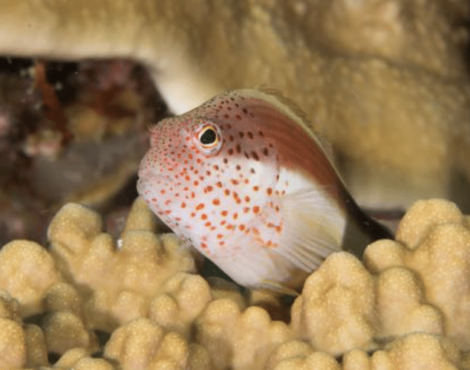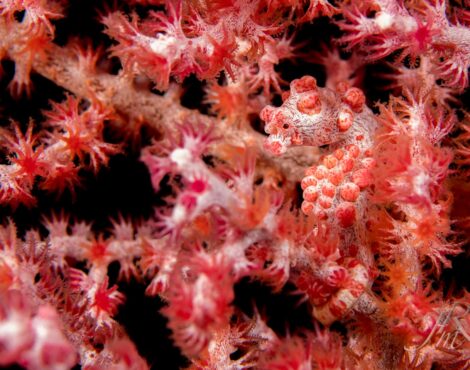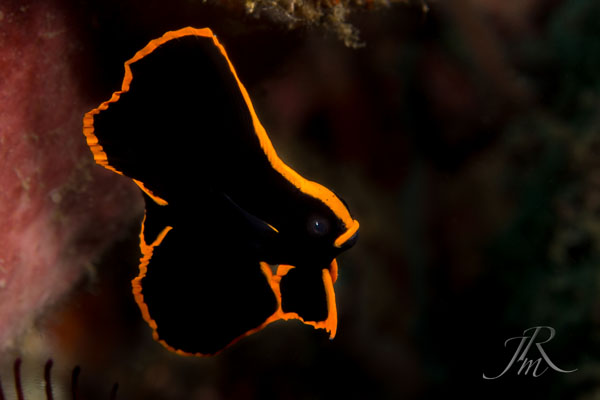
What are Batfish?
The term batfish can be a bit misleading depending on where you are from in the world. For us here in Siladen (and the wider Indo-Pacific area), the name batfish refers to members genus Platax. They are part of the wider family, Spadefish.
Batfish may also refer to species of the genus Ogcocephalus â a rather bizarre group of fish that use highly adapted pectoral, pelvic, and anal fins to âwalkâ on the seabed, and are part of the larger anglerfish family.
The name can even refer to the eagle ray species Myliobatis californica, known locally as the California batfish or bat ray.
For the sake of clarification, whenever we mention the term batfish, we will be talking about the Platax genus only.
What do Batfish look like?
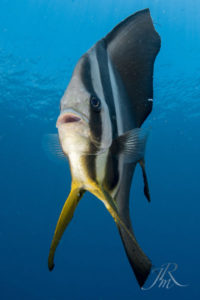
There are five known species of batfish, all of which have a similar appearance once they reach maturity.
They are roughly disc shaped with laterally compressed bodies and large dorsal and anal fins. This gives them a roughly triangular shape and they are often confused for angelfish, although they are not closely related.
As adults, their bodies are silvery grey in colour with darker bands running across the head, and black fringed fins. Depending of the species, either the tail fin or dorsal fin will be yellow.
All species will become roughly the same size upon reaching maturity. The longfin batfish is the largest, growing up to around 70cm in length, while the other species reach a maximum length of around 55cm.
What do Batfish eat?
All batfish species are omnivore, meaning they have a diet that consists of both plant and animal based foods. They eat plankton, small invertebrates, and marine algae.
The species Platax pinnatus, known here are the pinnate batfish, has been observed to significantly reduce algal blooms on the Great Barrier Reef, which means that they could become a particularly important species as algal blooms become more frequent as the oceans warm.
Batfish Behavior
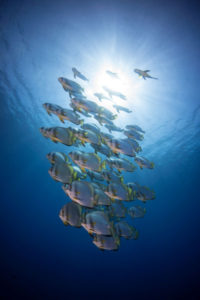
All species of batfish are non-aggressive, and while the juveniles tend to be either solitary or live in small groups, the adults tend to be highly social â forming large schools, often even with other species, and even following divers.
Where can I spot Batfish?
There are many locations around Bunaken Marine Park where you can see batfish while diving or snorkeling.
In the shallows, they prefer flat, sheltered areas. You can often see small groups of them hiding behind boulder corals at some of our favourite snorkeling sites, such as Bunaken Timur or Mandolin.
For divers, we can find batfish at most sites, however, large schools can be seen hovering around Fukui. This sloping reef often has very clear water, and a beautiful hard coral garden â a great combination for some great wide angle photos.
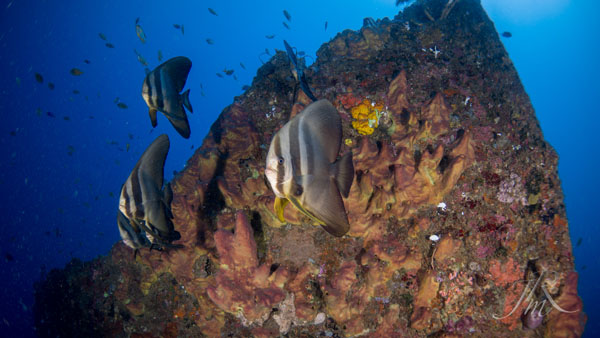 Batfish also seem to love artificial reefs, and can usually be found hanging around shipwrecks or coral growing platforms. We frequently see them in small number around the Molas shipwreck â which can be great for wide-angle photos too on days when visibility is good.
Batfish also seem to love artificial reefs, and can usually be found hanging around shipwrecks or coral growing platforms. We frequently see them in small number around the Molas shipwreck â which can be great for wide-angle photos too on days when visibility is good.

